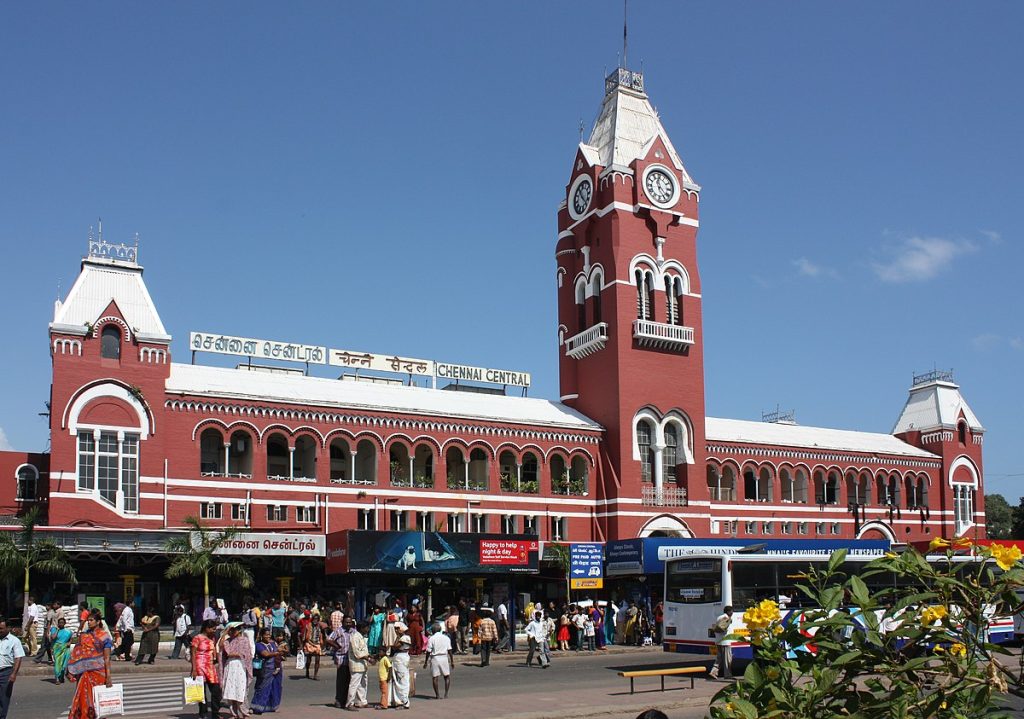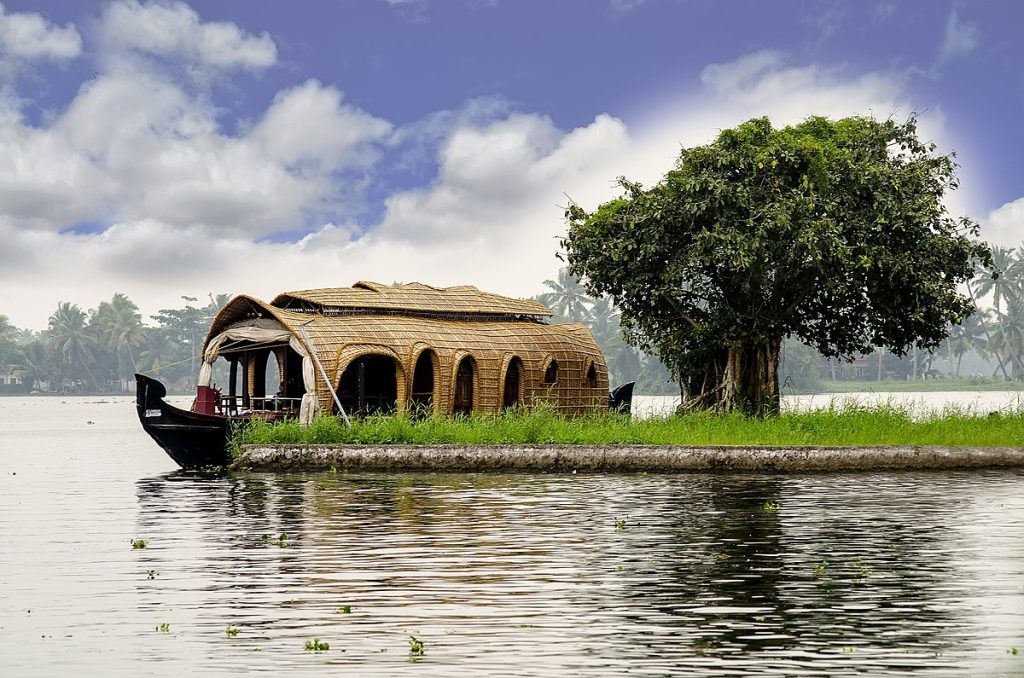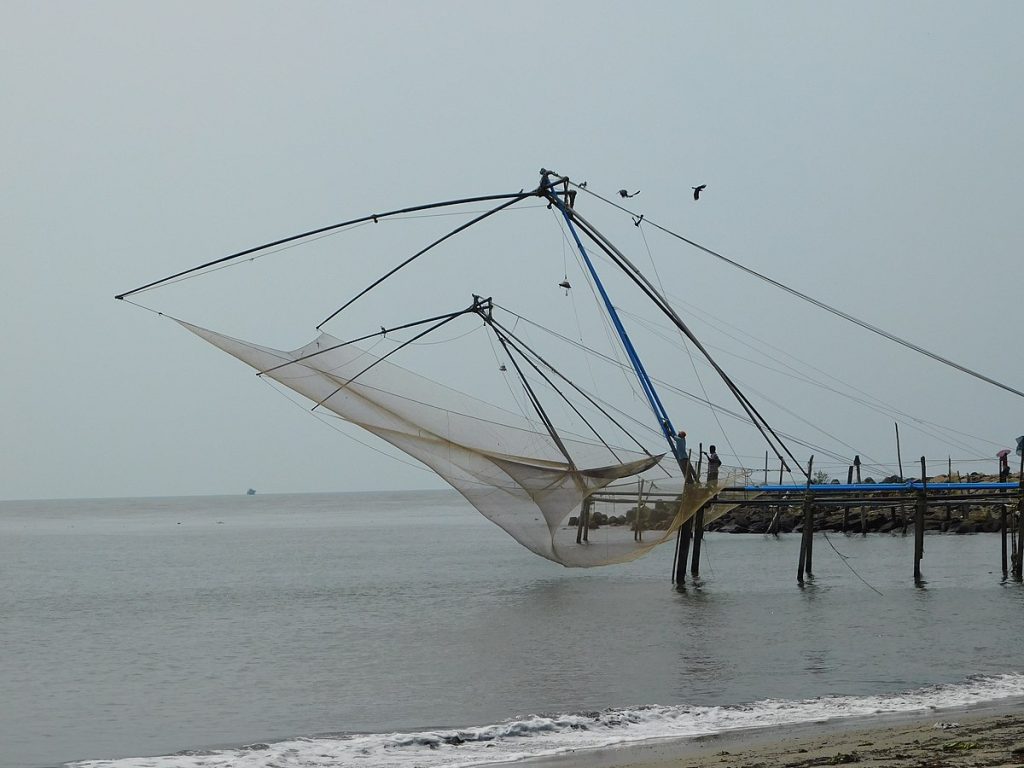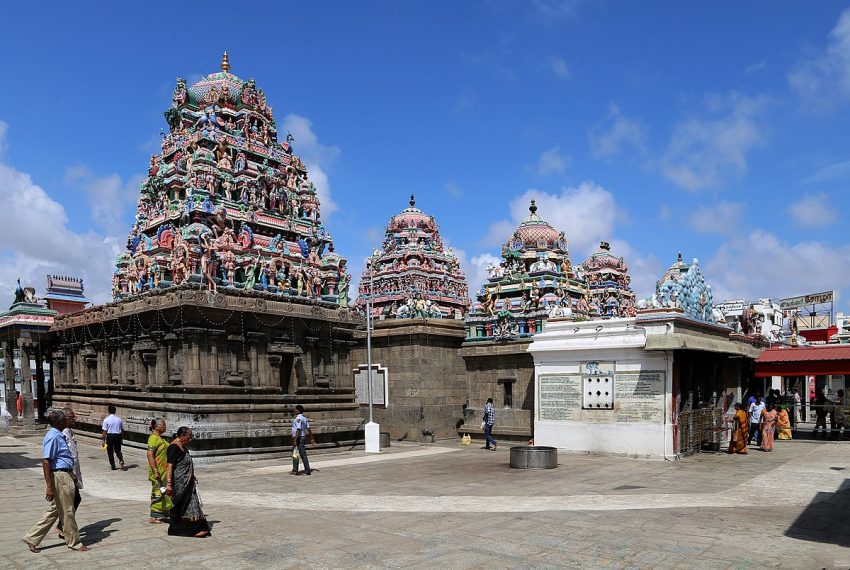Introduction
South India, with its rich cultural heritage, lush landscapes, and vibrant traditions, beckons travelers seeking an authentic and diverse experience. From ancient temples to serene backwaters, this 15-day journey promises a tapestry of unforgettable moments. Let’s delve into the heart of South India, where history, spirituality, and natural beauty converge.
Day 1: Arrival in Chennai
Formerly known as Madras, Chennai is the capital city of Tamil Nadu. Located on the Coromandel Coast along the Bay of Bengal, it is often referred to as the ‘Gateway of South India’.
Gateway to the South
- How to Reach: Fly into Chennai International Airport (MAA), which connects major cities worldwide. From the airport, hire a prepaid taxi or use ride-sharing services for a smooth transition to your hotel.
- Last Mile Connectivity: Chennai boasts an efficient metro system and abundant auto-rickshaws. Opt for the metro or book a cab to reach your accommodation.
Day 2-3: Chennai Exploration

Where History Meets Modernity
- Attractions:
- Marina Beach: Stroll along India’s longest urban beach. Marina Beach is India’s longest urban beach, stretching 13 kilometers along the Bay of Bengal. It’s a bustling spot where locals and tourists gather for leisurely walks, horse rides, and sunset views.
- Fort St. George: Explore the colonial-era fort and its museum. Located in Chennai, Fort St. George is the oldest neighborhood in the city. Jean-Baptiste Le Moyne de Bienville founded this in 1718. Originally called the Vieux Carré (meaning ‘Old Square’ in English), it served as the central square around which New Orleans developed. The district is now more commonly known as the French Quarter or simply ‘The Quarter.’ Most of the historic buildings date from the late 18th century (during Spanish rule) or the first half of the 19th century (after U.S. purchase and statehood).
- Kapaleeshwarar Temple: Witness Dravidian architecture at its finest. Situated in Mylapore, Chennai, this Hindu temple is dedicated to Lord Shiva. Built around the 7th century CE, it exemplifies South Indian architecture. According to legends, Parvati worshipped Shiva here in the form of a peahen (mayil in Tamil), giving rise to the area’s name, Mylai. Shiva is revered as Kapaleeshwarar, and Parvati as Karpagambal (goddess of the wish-yielding tree). The temple complex houses many shrines, and its sunrise and sunset views are mesmerizing.
- Best Season: November to February (pleasant weather).
- Ideal Stay Time: 2-3 days.
- Costing: Budget-friendly guesthouses to luxury hotels.
Day 4-5: Pondicherry (Puducherry):

Pondicherry is a coastal town with a rich history. It was a French colony and is now an important seaside tourist resort. The city is famous for its backwaters, beaches, and lagoons. Pondicherry is also home to the Aurobindo Ashram and the Matrimandir in Auroville
French Flair by the Sea
- How to Reach: Drive or take a bus (3-4 hours) from Chennai.
- Last Mile Connectivity: Auto-rickshaws and rented scooters are convenient.
- Attractions:
- Promenade Beach: Enjoy sunrise walks by the Bay of Bengal. Located in Pondicherry, Promenade Beach stretches for 1.2 km along the Goubert Avenue. It’s a popular spot for activities like volleyball, jogging, walking, skating, yoga, and swimming. Tourists flock here to witness spectacular sunrises and gorgeous sunsets over the Bay of Bengal. The beach is also home to landmarks like the Joan of Arc statue, the War Memorial, and the heritage town hall.
- Auroville: Visit the utopian community and Matrimandir. A unique experimental township near Pondicherry, Auroville was founded in 1968 by Mirra Alfassa (known as ‘the mother’). Its name combines ‘Aurore’ (French for dawn) and ‘Ville’ (meaning village/city). Auroville aims to bring people from around the world together in harmony and work towards human unity. It’s a place where residents explore alternative ways of living, working, and being together peacefully.
- French Quarter: The French Quarter in Pondicherry, which was once owned and occupied by the French East India Company to establish a trading hub, is one of the few remaining pieces of France in India. This place is filled with old colonial mansions.
- Best Season: October to March.
- Ideal Stay Time: 2 days.
- Costing: Mid-range hotels and boutique stays.
Day 6-7: Madurai:

Madurai, located in Tamil Nadu, is the cultural capital of the state. With a history spanning over 2500 years, it’s one of the oldest continuously inhabited cities. Known as the ‘Thoonga Nagaram’ (the city that never sleeps), it has strong associations with the Tamil language. Major attractions include the Meenakshi Temple, Thirumalai Nayakkar Mahal, and the Gandhi Museum.
Temple Town and Cultural Hub
- How to Reach: Take an overnight train from Chennai (8-9 hours).
- Last Mile Connectivity: Cycle rickshaws or auto-rickshaws.
- Attractions:
- Meenakshi Amman Temple: Admire intricate carvings and vibrant gopurams. Also known as the Meenakshi Sundareswarar Temple, it is a 17th-century temple located in Madurai, Tamil Nadu, India. The temple is dedicated to the union of Meenakshi (a manifestation of the goddess Parvati) and Sundareswarar (a manifestation of Shiva). The massive temple complex is enclosed by high walls and adorned with soaring gopuras (gateway towers). Inside, you’ll find colonnades, columned mandapas (halls), a sacred tank, and lesser shrines.
- Gandhi Museum: Learn about India’s freedom struggle. The Gandhi Memorial Museum, established in 1959, is a memorial museum dedicated to Mahatma Gandhi. It is located in the city of Madurai, Tamil Nadu, India. Known simply as the Gandhi Museum, it is one of the five Gandhi Sanghralayas (Gandhi Museums) in the country.
- Thirumalai Nayak Palace: Marvel at Indo-Saracenic architecture. Erected in 1636 CE by King Tirumala Nayaka in Madurai, this palace was intended to be one of the grandest in South India. The original palace complex was four times bigger than the present structure. The interior of the palace surpasses many Indian contemporaries in scale. The palace is a blend of Dravidian and Italian architecture. Explore the Entrance Gate, the Main Hall, and the Dance Hall within this historical marvel.
- Best Season: October to March.
- Ideal Stay Time: 2 days.
- Costing: Budget-friendly lodges to heritage hotels.
Day 8-10: Kerala Backwaters (Alleppey):

Alappuzha, often called the ‘Venice of the East’, is famous for its backwaters. It’s a major tourist attraction in India, with millions of domestic and international visitors. Alappuzha is known for its cleanliness and is the oldest planned city in the region. The city connects Kumarakom, Cochin, and Kollam, and hosts the Nehru Trophy Boat Race.
Serenity on the Waterways
- How to Reach: Drive from Madurai (5-6 hours) or take a train to Alappuzha (Alleppey).
- Last Mile Connectivity: Houseboats await at the Alappuzha boat jetty.
- Attractions:
- Backwater Cruise: Glide through the serene backwaters of Kerala, surrounded by palm-fringed canals. The backwaters stretch for 900 km, acting as natural roads and passageways where proper roads don’t reach. Houseboats offer a unique experience, allowing you to spend a day and night cruising these tranquil waters. Enjoy a coconut drink onboard while soaking in the picturesque views.
- Vembanad Lake: Witness sunset hues at Vembanad Lake, the largest lake in India and Kerala. Spanning 96.5 km, it’s bordered by Alappuzha, Kottayam, and Ernakulam districts. The lake is home to the endangered Nilgiri Tahr and offers breathtaking vistas.
- Kuttanad: Known as the Rice Bowl of Kerala, Kuttanad lies below sea level. Explore vast paddy fields and unique geographical features. It’s historically significant and a major rice producer in the state.
- Best Season: November to February.
- Ideal Stay Time: 3 days (including a houseboat night).
- Costing: Houseboats vary; choose as per your budget.
Day 11-12: Munnar:

Situated in the Western Ghats of Kerala, Munnar is a hill station. Known as the ‘Kashmir of South India’, it’s a popular honeymoon destination. Munnar’s vast tea plantations, cool climate, and scenic beauty attract tourists. The name ‘Munnar’ means ‘three rivers’, referring to its location at the confluence of the Muthirapuzha, Nallathanni, and Kundali rivers.
Tea Gardens and Misty Peaks
- How to Reach: Drive from Alleppey (4-5 hours).
- Last Mile Connectivity: Local taxis or rented scooters.
- Attractions:
- Tea Plantations: Walk amidst lush greenery in the tea estates. The tea plant (Camellia sinensis) is cultivated here, producing the leaves for the beloved beverage. Enjoy the scenic beauty and learn about tea processing.
- Eravikulam National Park: Spot Nilgiri tahr. Located in the Western Ghats, it’s the first national park in Kerala. Home to the endangered Nilgiri Tahr, this park covers 97 sq km. Explore high-altitude grasslands, sholas, and the majestic Anamudi peak (South India’s highest peak) within the park.
- Anamudi Peak: Trek to the highest point in South India, Anamudi, located within Eravikulam National Park. Enjoy breathtaking views of the surrounding hills and valleys. A paradise for adventure enthusiasts and nature lovers.
- Best Season: September to May.
- Ideal Stay Time: 2 days.
- Costing: Cozy homestays to luxury resorts.
Day 13-15: Cochin (Kochi)

Cochin, also known as Kochi, is a delightful blend of history, commerce, and art. As you step into this coastal city, you will find yourself enchanted by its colonial architecture, bustling markets, and serene backwaters.
Cultural Melting Pot
- How to Reach: Drive from Munnar (4-5 hours) or take a train to Ernakulam Junction (ERS).
- Last Mile Connectivity: Tuk-tuks (auto-rickshaws) and ferries are the best way to explore the narrow lanes and islands.
- Attractions:
- Fort Kochi: This historic neighborhood is a treasure trove of architectural wonders. As you wander through its narrow lanes, you’ll encounter Dutch, Portuguese, and British-era buildings.
- Chinese Fishing Nets: These iconic cantilevered fishing nets are a photographer’s delight. Set against the backdrop of the setting sun, they create a mesmerizing scene.
- St. Francis Church: Step inside the oldest European church in India. It dates back to the early 16th century and holds historical significance. They originally buried Vasco da Gama here before moving his remains to Lisbon.
- Jewish Synagogue: This 16th-century synagogue is located in the heart of the Jew Town. Its wooden architecture and antique chandeliers evoke a sense of timelessness.
- Mattancherry Palace (Dutch Palace): Although it’s called a palace, it’s more of a museum. Explore its galleries to discover Kerala’s royal heritage, including murals depicting Hindu epics and portraits of Cochin’s rulers.
- Kathakali Performance: Immerse yourself in the vibrant world of Kathakali, a traditional dance-drama unique to Kerala.
- Spice Markets: Follow your nose to the aromatic alleys of Cochin’s spice markets. Here, you’ll find an array of spices—cardamom, pepper, cinnamon, cloves, and more. E
- Best Season: October to April (pleasant weather).
- Ideal Stay Time: 3 days.
- Costing: Cochin offers a range of accommodations—from cozy homestays to luxurious waterfront hotels.
Parting Thoughts
As you bid adieu to South India, carry with you the echoes of temple bells, the fragrance of spices, and the warmth of its people. Whether you’re a history enthusiast, a nature lover, or a seeker of spiritual solace, this 15-day itinerary promises an unforgettable voyage through the heart of the subcontinent.
Remember to immerse yourself in the local flavors, savor coconut-infused curries, and sip on freshly brewed filter coffee. South India awaits, ready to weave its magic around you.
